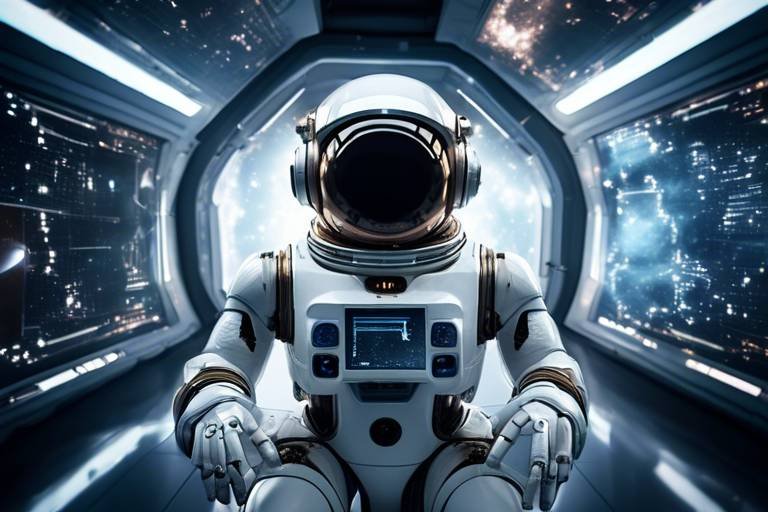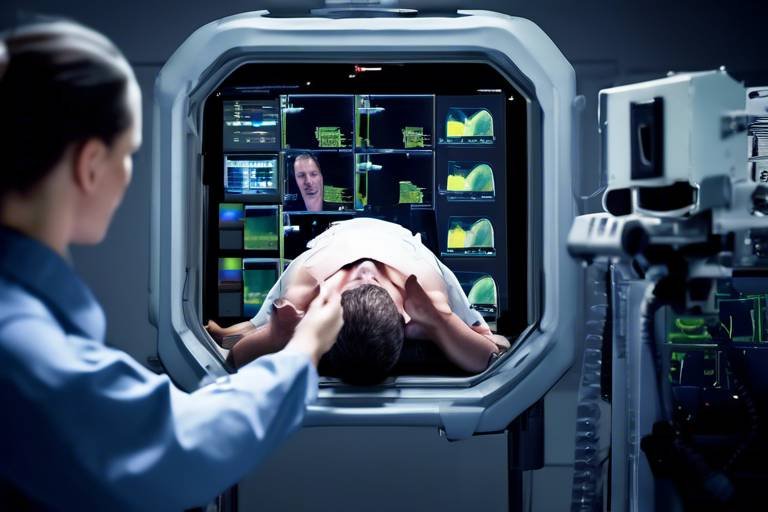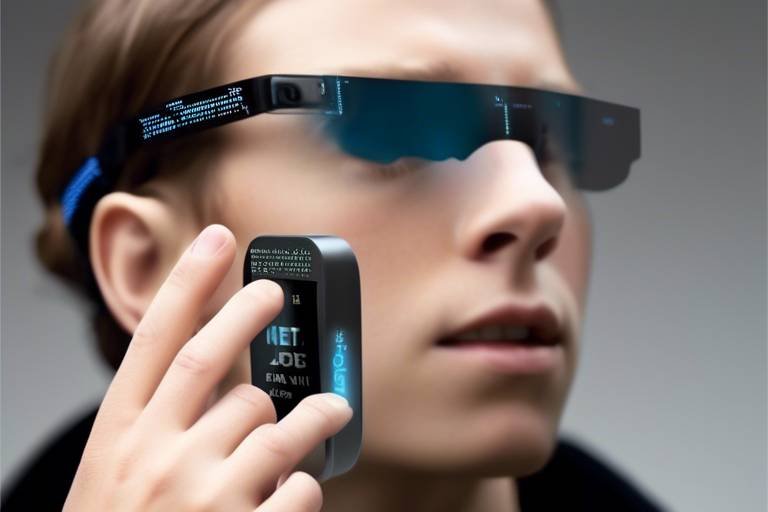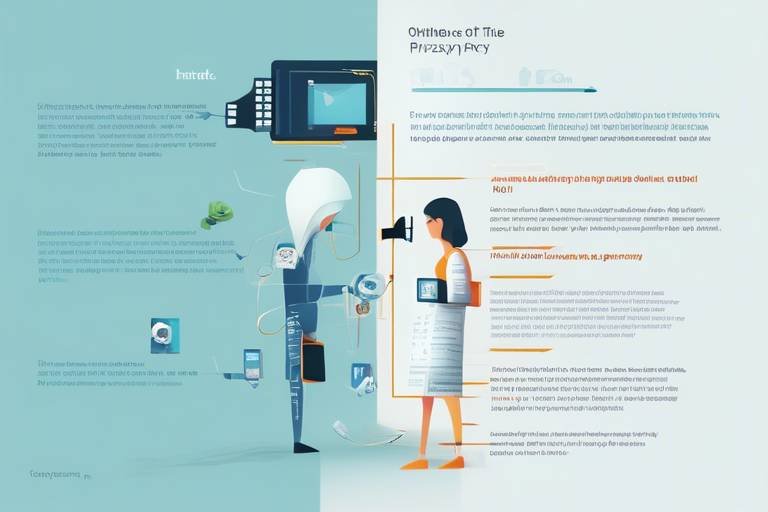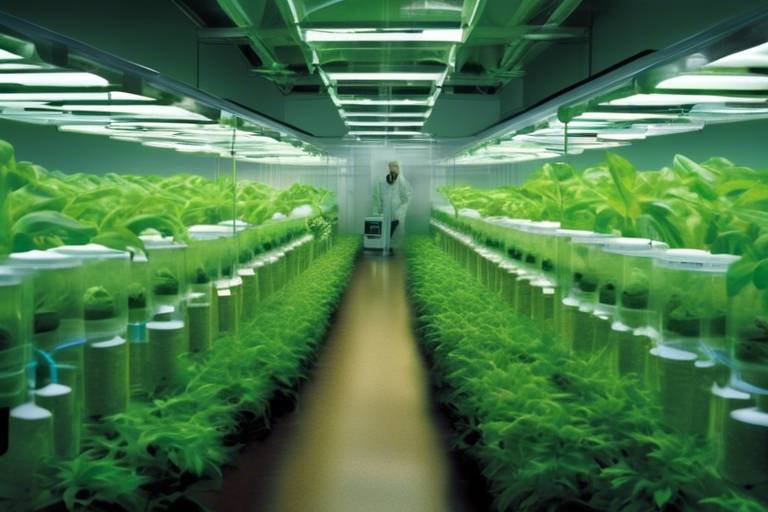The Role of AI in Future Space Missions
As we stand on the brink of a new era in space exploration, the role of artificial intelligence (AI) is becoming increasingly pivotal. Imagine a future where spacecraft can navigate the vastness of space with the precision of a seasoned pilot, or where AI algorithms sift through mountains of data faster than any human could, unveiling secrets of the universe that have remained hidden for centuries. This isn’t just a dream; it’s the reality we are moving toward. AI is set to transform space missions in ways we are just beginning to understand, enhancing our capabilities and expanding our reach beyond Earth.
The potential applications of AI in space exploration are as vast as the cosmos themselves. From autonomous navigation systems that allow spacecraft to chart efficient courses to distant planets, to advanced data analysis techniques that can reveal patterns and anomalies in the data collected from space missions, AI is poised to be a game-changer. The ability to make real-time decisions based on incoming data means that missions can adapt to unforeseen challenges, ensuring the safety of astronauts and equipment alike.
Moreover, AI is not just about efficiency; it’s about discovery. With machine learning techniques, researchers can delve into the field of astrobiology, analyzing biosignatures and environmental data that could indicate the presence of life beyond Earth. Imagine AI systems that can predict the habitability of a planet by analyzing its atmospheric conditions, surface composition, and other critical factors. This predictive modeling could guide future missions toward the most promising targets, maximizing our chances of making groundbreaking discoveries.
But the integration of AI into space missions is not without its challenges. While AI systems offer immense potential, they also raise important questions about reliability and ethics. For instance, as AI takes on more decision-making responsibilities, ensuring data security becomes crucial. Sensitive information about missions must be protected from potential breaches, which could have catastrophic consequences. Furthermore, the ethical implications of allowing AI to make critical decisions in high-stakes situations necessitate clear guidelines for human oversight. We must ensure that while AI assists us, it does not replace the human element that is vital for exploration.
As we look to the future, it’s clear that AI will play a crucial role in shaping the next chapter of space exploration. With advancements in technology and a better understanding of AI's capabilities, we can expect to see more ambitious missions that push the boundaries of our knowledge. The universe is vast and full of mysteries, and with AI by our side, we are better equipped than ever to explore its depths.
- What is the role of AI in space exploration? AI enhances navigation, data analysis, and decision-making processes during space missions, making them more efficient and safer.
- How does AI improve data analysis in space missions? AI algorithms can process vast amounts of data quickly, identifying patterns and anomalies that may be missed by human researchers.
- What ethical considerations are there with AI in space? The use of AI raises questions about decision-making autonomy and the need for human oversight, especially in critical situations.
- Can AI predict the habitability of other planets? Yes, AI-driven predictive models can assess planetary environments to determine their potential for supporting life.

AI-Powered Navigation Systems
Artificial intelligence is not just a buzzword; it's a game-changer in the realm of space exploration. Imagine a spacecraft that can navigate the vastness of space with the precision of a seasoned pilot. That’s precisely what AI-powered navigation systems are bringing to the table. These systems leverage autonomous decision-making and real-time data analysis to chart more efficient routes and enhance safety during missions to distant planets and moons. With AI at the helm, spacecraft can adapt to unforeseen circumstances, making split-second decisions that could mean the difference between success and failure.
One of the most exciting aspects of AI navigation is its ability to analyze complex data streams from various sensors. Traditional navigation systems rely heavily on pre-programmed paths and human input, which can be limiting. However, AI systems can process information from multiple sources—such as star trackers, gyroscopes, and accelerometers—simultaneously. This capability allows for a dynamic response to changing conditions in space, such as gravitational pulls from nearby celestial bodies or unexpected obstacles. Imagine a spacecraft dodging debris or adjusting its course to avoid a solar storm, all without waiting for human intervention!
Furthermore, the integration of AI into navigation systems can significantly reduce the workload on astronauts. In previous missions, astronauts had to manually adjust navigation settings based on real-time data, which could be stressful and time-consuming. With AI, these systems can operate autonomously, allowing astronauts to focus on other critical mission tasks. This shift not only enhances efficiency but also promotes safety, as it minimizes the chances of human error. Picture this: a crew member can spend more time conducting experiments or maintaining equipment while the AI handles the intricate dance of navigation.
To illustrate the advantages of AI-powered navigation, consider the following table that compares traditional navigation systems with AI-enhanced systems:
| Feature | Traditional Navigation | AI-Powered Navigation |
|---|---|---|
| Data Processing Speed | Slow, manual adjustments | Real-time, autonomous processing |
| Response to Unforeseen Events | Limited, requires human input | Immediate, adaptive changes |
| Astronaut Workload | High, manual navigation tasks | Reduced, focus on critical tasks |
| Safety | Potential for human error | Minimized risk through automation |
In conclusion, AI-powered navigation systems are not just a futuristic concept; they are becoming a reality that will redefine how we explore the cosmos. By enhancing navigation efficiency and safety, these systems allow us to push the boundaries of space exploration further than ever before. As we set our sights on distant planets and moons, the role of AI in navigation will be crucial in ensuring that we reach our destinations safely and effectively. So, the next time you look up at the stars, remember that there's a whole new world of possibilities waiting for us, powered by the incredible capabilities of artificial intelligence.
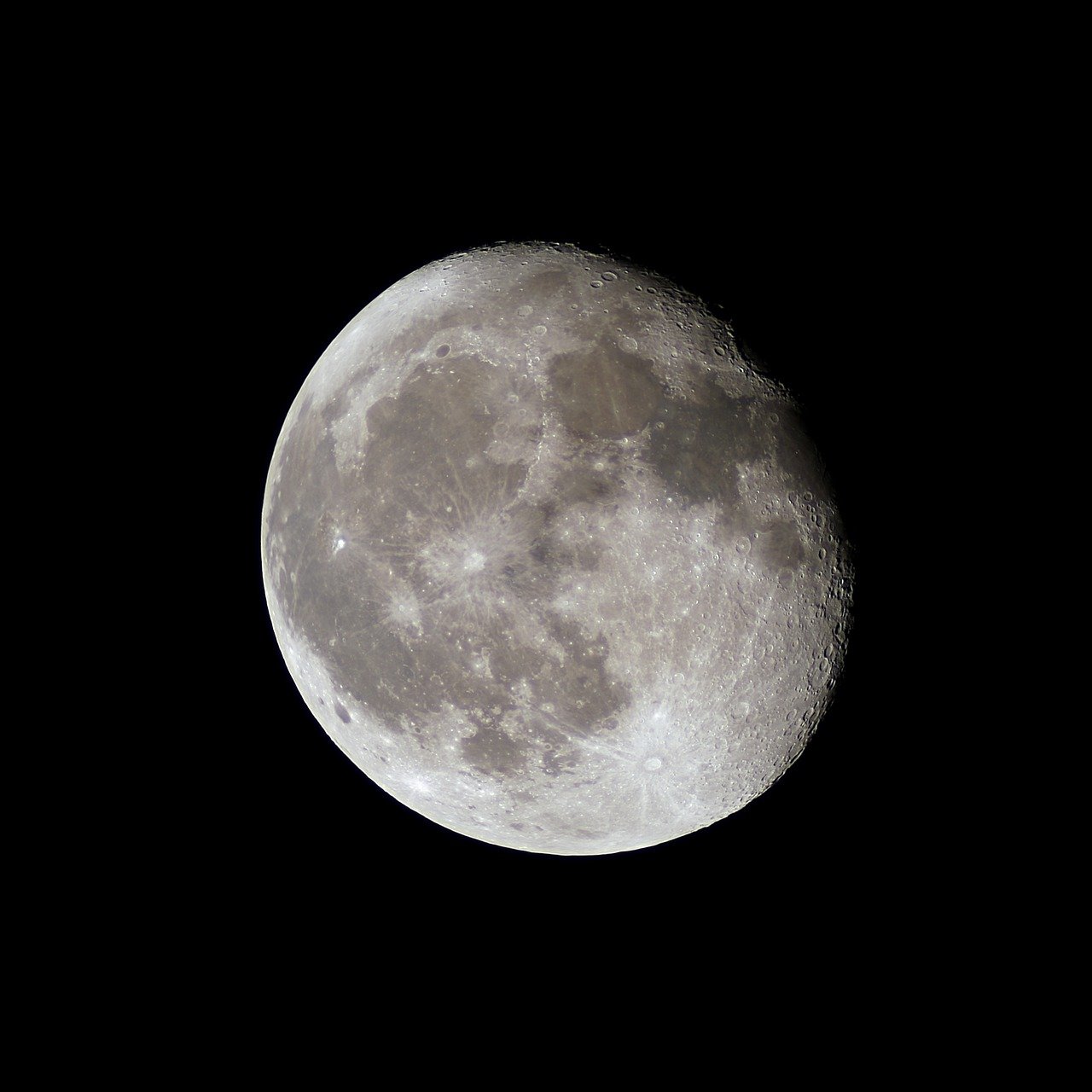
Data Analysis and Interpretation
In the vast expanse of space, data is the lifeblood of exploration. Every mission generates an overwhelming amount of information, from images captured by distant spacecraft to readings from complex scientific instruments. Artificial intelligence (AI) is stepping in as a critical player in this arena, transforming how we analyze and interpret this data. Imagine trying to find a needle in a haystack—but this haystack is billions of miles wide and filled with countless needles. This is where AI shines, sifting through the chaos and revealing insights that would otherwise remain hidden.
AI algorithms are designed to process and analyze vast datasets at speeds and accuracies far beyond human capabilities. By leveraging machine learning and advanced statistical techniques, these algorithms can identify patterns, anomalies, and trends that may escape even the most trained eyes. For instance, when analyzing data from the Kepler Space Telescope, AI systems have been able to detect exoplanets by recognizing the subtle dips in brightness caused when a planet transits in front of its host star. This process, which could take humans years to analyze manually, can be accomplished in a fraction of the time with AI.
Moreover, AI can enhance the quality of data interpretation by continuously learning from new inputs. As it processes more data, it becomes better at distinguishing between significant signals and background noise. This capability is particularly crucial in astrobiology, where scientists are searching for biosignatures—indicators of past or present life—on other planets. By applying AI to analyze environmental data, researchers can pinpoint conditions that may support life, leading to targeted exploration efforts. For example, AI-driven analysis of Martian soil samples can reveal organic compounds that suggest the planet's habitability.
To illustrate the impact of AI on data analysis, consider the following table that compares traditional data analysis methods with AI-enhanced approaches:
| Aspect | Traditional Methods | AI-Enhanced Methods |
|---|---|---|
| Speed | Slow, often requiring manual input | Rapid, processing data in real-time |
| Accuracy | Subject to human error | High accuracy through pattern recognition |
| Scalability | Limited by human resources | Scalable to handle vast datasets |
| Learning Capability | Static analysis | Adaptive learning from new data |
This table highlights the remarkable advantages AI brings to the table, making it an indispensable tool for modern space missions. As we continue to push the boundaries of our understanding of the universe, AI's role in data analysis and interpretation will only grow. It not only accelerates the pace of discoveries but also enhances the quality of our findings, setting the stage for future breakthroughs in space exploration.
- How does AI improve data analysis in space missions?
AI improves data analysis by processing vast amounts of information quickly and accurately, identifying patterns and anomalies that human researchers might miss. - What are biosignatures, and how does AI help in their identification?
Biosignatures are indicators of past or present life, and AI helps identify them by analyzing environmental data for organic compounds and other life-supporting conditions. - Can AI replace human researchers in space missions?
While AI significantly enhances data analysis, human researchers are still essential for interpreting findings and making critical decisions based on AI-generated insights.

Machine Learning in Astrobiology
Machine learning is not just a buzzword; it's a groundbreaking innovation that's reshaping the field of astrobiology. Imagine having a powerful tool that can sift through countless data points faster than any human could ever dream of. That's what machine learning brings to the table! By leveraging algorithms that learn from data, researchers can analyze biosignatures and environmental conditions across various celestial bodies. This capability is crucial as we search for life beyond Earth.
The beauty of machine learning lies in its ability to identify patterns and correlations that might elude even the most experienced scientists. For instance, when examining data from missions to Mars or Europa, machine learning can help pinpoint potential signs of life by analyzing chemical compositions and atmospheric conditions. This is akin to having a super-sleuth on your team, tirelessly working to uncover clues that could lead to groundbreaking discoveries.
One of the most exciting applications of machine learning in astrobiology is its role in analyzing vast datasets generated by telescopes and space missions. These datasets often contain millions of data points, making it nearly impossible for human researchers to process them all effectively. However, machine learning algorithms can quickly analyze this information, categorizing it and highlighting anomalies that warrant further investigation. This not only speeds up the research process but also enhances the quality of findings.
To illustrate this point, consider the following examples of how machine learning is applied in astrobiology:
- Identifying Biosignatures: Machine learning algorithms can analyze spectral data to detect chemical markers associated with life, such as methane or oxygen, in the atmospheres of exoplanets.
- Environmental Analysis: By processing data from rovers and landers, machine learning helps scientists understand the geological and climatic history of planets, providing insights into their habitability.
- Predictive Analytics: Machine learning models can predict the likelihood of finding life based on environmental parameters, guiding future missions to the most promising locations.
Moreover, the integration of machine learning with other technologies, such as remote sensing and robotics, enhances our ability to explore and analyze extraterrestrial environments. This synergy allows for real-time data processing and decision-making, crucial for missions where time and resources are limited. Just think about it: a rover on Mars could autonomously analyze its surroundings, make decisions about where to explore next, and send back valuable data, all thanks to machine learning!
Yet, as we embrace these advancements, it's essential to remain aware of the challenges that lie ahead. The algorithms must be trained on high-quality data to ensure accurate predictions and analyses. Moreover, the ethical implications of relying on machine learning for critical decisions in astrobiology cannot be overlooked. We must ensure that human oversight remains integral to the decision-making process, especially when it comes to interpreting data related to potential life forms.
In conclusion, machine learning is revolutionizing astrobiology, offering unprecedented opportunities to explore the cosmos and understand the conditions for life beyond Earth. As we continue to refine these technologies and address the associated challenges, the quest for knowledge about our universe will undoubtedly become more exciting and fruitful.
- What is machine learning in the context of astrobiology?
Machine learning refers to the use of algorithms and statistical models to analyze and interpret complex datasets in astrobiology, helping scientists identify patterns and potential signs of life.
- How does machine learning improve the search for extraterrestrial life?
By processing vast amounts of data quickly and accurately, machine learning helps researchers identify biosignatures and assess environmental conditions that could support life.
- What are some challenges associated with using machine learning in astrobiology?
Challenges include ensuring data quality, addressing ethical concerns regarding decision-making, and maintaining human oversight in critical situations.

Predictive Modeling for Habitability
In the quest to discover life beyond Earth, predictive modeling has emerged as a groundbreaking tool that leverages the power of artificial intelligence. By simulating various planetary environments, AI-driven models can assess the potential for habitability on distant worlds. Imagine trying to find a needle in a haystack; predictive modeling is like using a magnet to pull out that needle, making the search for life-supporting conditions much more efficient.
These models analyze a multitude of factors, such as atmospheric composition, temperature ranges, and geological features, to determine whether a planet or moon could support life as we know it. For instance, consider the following aspects that predictive models evaluate:
- Atmospheric Conditions: The presence of essential gases like oxygen and methane can indicate biological activity.
- Temperature Variability: Understanding a planet's temperature fluctuations helps identify stable environments where life could thrive.
- Water Availability: Water is the cornerstone of life; hence, models assess the likelihood of liquid water existing on the surface or subsurface.
Moreover, predictive modeling can guide space agencies toward the most promising targets for exploration. For example, missions to Mars or the icy moons of Jupiter and Saturn can be prioritized based on the likelihood of discovering habitable conditions. By using AI to evaluate these factors, scientists can make informed decisions about where to send rovers or landers, ultimately maximizing the chances of finding extraterrestrial life.
However, it's not just about identifying potentially habitable planets; predictive modeling also helps in understanding the evolution of environments. By simulating how conditions might change over time, researchers can predict whether a planet's habitability is stable or if it is deteriorating. This dynamic approach allows scientists to not only look at the present conditions but also to forecast future scenarios, enabling a more comprehensive understanding of the cosmos.
In conclusion, predictive modeling for habitability stands as a testament to how AI can enhance our exploration of the universe. By integrating vast amounts of data and simulating complex interactions, these models are not merely tools; they are our guides in the search for life beyond Earth, illuminating the dark corners of space with the light of knowledge.
- What is predictive modeling in the context of space exploration?
Predictive modeling uses algorithms to simulate and analyze planetary environments, assessing their potential for supporting life. - How does AI improve the accuracy of these models?
AI processes vast datasets more efficiently than humans, identifying patterns and correlations that might be overlooked, thus enhancing predictive accuracy. - What are the key factors considered in habitability models?
Key factors include atmospheric composition, temperature ranges, and the presence of liquid water. - Can predictive modeling help in planning future space missions?
Yes, it guides mission planners by highlighting the most promising targets for exploration based on their potential habitability.

Robotics and Automated Systems
In the ever-evolving landscape of space exploration, are emerging as game-changers, transforming how we conduct missions beyond our planet. Imagine a scenario where machines can autonomously navigate the harsh terrains of distant planets, perform complex repairs, and collect invaluable samples—all without the need for human presence. This is not science fiction; it's the reality that artificial intelligence is helping to create. By integrating AI with robotic systems, we can enhance the capabilities of our spacecraft and rovers, making them more efficient and resilient in the face of challenges.
The beauty of these advanced systems lies in their ability to operate in environments that are not only hostile but also unpredictable. For instance, consider the Mars rovers, which have been equipped with AI-driven technology that allows them to make real-time decisions based on their surroundings. This means they can avoid obstacles, select optimal paths, and even determine the best locations for sample collection. Such capabilities drastically reduce the need for constant human oversight, allowing mission control teams to focus on broader strategic goals rather than micromanaging every movement.
Moreover, the use of robotics in space missions can significantly enhance safety. With AI-powered robots taking on dangerous tasks, such as repairing spacecraft or conducting experiments in extreme conditions, astronauts can remain safe inside their habitats. This not only protects human life but also maximizes the scientific output of each mission. For example, if a spacecraft encounters a malfunction, an AI-driven robot can quickly assess the situation and perform repairs, ensuring that the mission continues smoothly.
| Benefits of Robotics in Space Missions | Examples |
|---|---|
| Autonomous Operations | Rovers like Curiosity and Perseverance can navigate and conduct experiments without waiting for commands from Earth. |
| Enhanced Safety | Robots can perform high-risk tasks, such as repairing satellites or conducting experiments in extreme environments. |
| Increased Efficiency | AI algorithms optimize the robots' movements, allowing for quicker and more effective exploration. |
As we look to the future, the integration of AI and robotics will become even more pronounced. New missions aimed at exploring the moons of Jupiter or the rings of Saturn will rely heavily on these automated systems. The idea of sending a fleet of intelligent robots to conduct exploratory missions across multiple celestial bodies could revolutionize our understanding of the universe. With each advancement, we inch closer to unraveling the mysteries of space, and robotics will undoubtedly play a pivotal role in this journey.
- What are the main advantages of using robotics in space exploration?
Robotics enhance safety, increase efficiency, and allow for autonomous operations in harsh environments, reducing the need for human presence.
- How does AI improve robotic functions in space?
AI enables robots to make real-time decisions, adapt to changing conditions, and perform complex tasks independently.
- What are some examples of AI-powered robots used in space missions?
Rovers like Curiosity and Perseverance on Mars utilize AI to navigate and conduct scientific experiments autonomously.

Human-Machine Collaboration
In the realm of space exploration, the concept of is evolving at an unprecedented pace. Imagine astronauts working alongside intelligent systems that not only assist but also enhance their capabilities. This partnership is not just about machines performing tasks; it’s about creating a synergy that maximizes efficiency and safety during missions. With AI at the helm, astronauts can focus on critical decision-making while the systems handle routine operations, much like a co-pilot in an aircraft.
One of the most exciting aspects of this collaboration is the ability of AI to provide real-time support. Picture this: an astronaut on Mars encounters an unexpected geological formation. Instead of relying solely on their training and experience, they can consult an AI system that analyzes the situation instantly, offering suggestions based on vast datasets. This not only aids in decision-making but also reduces the cognitive load on astronauts, allowing them to function optimally in high-pressure environments.
Moreover, AI systems can learn from human interactions, adapting their responses based on the astronaut's preferences and past decisions. This adaptive learning means that over time, the AI becomes more attuned to the unique challenges faced by each crew member. It’s like having a personal assistant who not only understands your preferences but also anticipates your needs. For instance, if an astronaut frequently encounters issues with a specific piece of equipment, the AI can suggest preventative measures or troubleshooting steps before problems escalate.
However, the integration of AI into space missions is not without its challenges. As we embrace this collaboration, we must ensure that the systems are designed with user-friendly interfaces. A complex AI that is difficult to interact with can lead to frustration and errors. Therefore, engineers and designers are working tirelessly to create intuitive systems that allow for seamless interaction between humans and machines. This is crucial, especially in the high-stakes environment of space, where every second counts.
In addition, there is a growing emphasis on the ethical implications of AI decision-making. As AI systems become more autonomous, the question arises: who is ultimately responsible for the decisions made by these machines? Establishing clear guidelines and protocols for human oversight is essential to ensure that astronauts maintain control over critical decisions, particularly in life-or-death scenarios. This balance between autonomy and oversight is a delicate dance that will shape the future of human-machine collaboration in space.
In conclusion, the future of human-machine collaboration in space exploration is bright and full of potential. As AI continues to advance, we can expect a new era where astronauts are empowered by intelligent systems that enhance their capabilities, making space missions safer and more efficient. The journey into the cosmos is not just about reaching new destinations; it’s about how we harness technology to unlock the mysteries of the universe, together.
- What is human-machine collaboration in space exploration? It's the partnership between astronauts and AI systems, where both work together to enhance mission efficiency and safety.
- How does AI provide real-time support to astronauts? AI analyzes data instantly and offers suggestions based on vast datasets, aiding astronauts in decision-making.
- What are the challenges of integrating AI in space missions? Challenges include creating user-friendly interfaces, ensuring ethical decision-making, and maintaining human oversight.
- Why is ethical oversight important in AI decision-making? It ensures that astronauts retain control over critical decisions, especially in high-stakes situations.

Challenges of AI Implementation
As we stand on the brink of a new era in space exploration, the integration of artificial intelligence (AI) into our missions is not without its hurdles. While the potential benefits of AI are immense, the challenges it presents can be daunting. One of the primary concerns is reliability. Space missions operate in extreme environments where failure is not an option. The systems we deploy must be foolproof, capable of functioning seamlessly in the harsh conditions of space. This requires rigorous testing and validation processes to ensure that AI algorithms can withstand the unpredictable nature of space.
Another significant challenge revolves around ethical considerations. As AI systems become more autonomous, questions arise about the decision-making processes they employ. Who is responsible if an AI makes a critical error? This leads us to the necessity of establishing clear guidelines for human oversight. We need to ensure that while AI can assist in making decisions, there is always a human touch to intervene when necessary, especially in life-or-death situations. Moreover, the potential for AI to make decisions without human input raises ethical dilemmas that we must address proactively.
In addition to reliability and ethics, there are data security concerns that cannot be overlooked. AI systems often manage sensitive information, from mission-critical data to personal information about astronauts. The integrity of this data is paramount, and any breaches could have catastrophic consequences. As such, implementing robust cybersecurity measures is essential to protect against potential threats. This includes encryption, access controls, and continuous monitoring of AI systems to detect and respond to anomalies in real time.
Another challenge is the need for robust testing in extreme environments. Traditional testing methods may not adequately simulate the conditions of space, which can lead to unforeseen issues once a mission is underway. Developing new testing protocols that accurately reflect the challenges of space travel is crucial. This could involve using advanced simulation technologies or conducting tests in specialized facilities that mimic the vacuum and radiation of space.
Finally, the integration of AI into existing systems poses its own set of challenges. Many current spacecraft and technologies were not designed with AI in mind, leading to compatibility issues. Engineers must find innovative ways to retrofit or redesign systems to accommodate AI capabilities without compromising safety and functionality. This requires collaboration across disciplines, bringing together experts in AI, engineering, and space science to create cohesive solutions.
In summary, while the challenges of implementing AI in space missions are significant, they are not insurmountable. By prioritizing reliability, addressing ethical implications, ensuring data security, conducting thorough testing, and fostering interdisciplinary collaboration, we can harness the power of AI to unlock new frontiers in space exploration.
- What are the main challenges of AI in space exploration? The main challenges include reliability, ethical considerations, data security, robust testing, and integration with existing systems.
- How can we ensure AI systems are reliable? By conducting rigorous testing and validation processes to ensure they can operate effectively in extreme environments.
- What ethical concerns arise with AI decision-making? Questions about accountability and the need for human oversight in critical situations are major ethical concerns.
- How important is data security for AI in space missions? Extremely important, as breaches could compromise mission integrity and astronaut safety.

Data Security Concerns
As we venture further into the cosmos, the reliance on artificial intelligence (AI) systems to manage sensitive information becomes increasingly critical. The vast amounts of data collected from space missions—ranging from telemetry to scientific observations—are not only invaluable for research but also present significant security challenges. Imagine a scenario where a spacecraft is exploring a distant planet, and the AI system is tasked with analyzing data in real-time. Any breach in this system could jeopardize not only the mission but also the integrity of the data collected.
One of the primary concerns is the potential for data breaches. With AI systems being interconnected and often reliant on communication with Earth, they become vulnerable to cyber-attacks. This is particularly alarming given that space missions often involve sensitive information, including scientific discoveries that could have profound implications for humanity. To mitigate these risks, robust cybersecurity measures must be implemented. This includes encryption protocols, secure communication channels, and regular updates to the AI systems to address any vulnerabilities.
Furthermore, the challenge of ensuring data integrity cannot be overlooked. AI systems must be designed to not only protect against unauthorized access but also to maintain the accuracy and reliability of the data they process. Any alteration or corruption of data during transmission could lead to incorrect conclusions about planetary conditions or potential life-supporting environments. Thus, implementing rigorous checks and balances in data management processes is essential.
To illustrate the importance of data security in space missions, consider the following table that outlines potential threats and corresponding security measures:
| Threat | Security Measure |
|---|---|
| Cyber Attacks | Implement advanced encryption and firewalls |
| Data Corruption | Regular integrity checks and redundancy systems |
| Unauthorized Access | Multi-factor authentication and access controls |
| System Failures | Robust backup systems and fail-safes |
In addition to these technical measures, there is a pressing need for human oversight. As AI systems become more autonomous, the question arises: who is accountable for decisions made by these systems? Establishing clear guidelines for human intervention is crucial, especially in critical situations where the stakes are high. This ensures that while AI can enhance efficiency and decision-making, there remains a human element to oversee and validate the actions taken by these systems.
In conclusion, while AI presents exciting opportunities for future space missions, the concerns surrounding data security must be addressed with utmost seriousness. As we push the boundaries of exploration, we must ensure that the tools we use to navigate the universe are secure, reliable, and ethically managed.
- What are the main data security concerns in space missions? Data breaches, data integrity, and unauthorized access are primary concerns that need to be addressed.
- How can AI systems be protected from cyber-attacks? Implementing advanced encryption, secure communication channels, and regular system updates can help protect AI systems.
- Why is human oversight important in AI decision-making? Human oversight is crucial to ensure accountability and validate the decisions made by AI systems, especially in critical situations.
- What measures can be taken to ensure data integrity? Regular integrity checks, redundancy systems, and secure data management processes are essential for maintaining data integrity.

Ethical Implications of AI Decisions
The integration of artificial intelligence (AI) into space missions is not just a technical marvel; it also brings forth a plethora of ethical implications that we must carefully navigate. As AI systems become increasingly autonomous, the question arises: who is responsible when an AI makes a decision that leads to unforeseen consequences? This dilemma is particularly pressing in the context of space exploration, where decisions can impact not only mission success but also the safety of human lives and the integrity of extraterrestrial environments.
One of the core ethical concerns revolves around the autonomy of AI systems. When AI is tasked with making critical decisions—such as navigating a spacecraft through treacherous terrain or determining whether to land on a potentially habitable planet—how do we ensure that these systems prioritize human values and safety? The challenge lies in programming AI with a set of ethical guidelines that can adapt to the unpredictable nature of space missions. This leads us to ponder: should humans always have the final say, or can AI be trusted to make sound decisions independently?
Moreover, we must consider the implications of data bias. AI systems learn from historical data, which can inadvertently carry biases. For instance, if the data used to train AI algorithms are skewed or incomplete, the decisions made by these systems may not reflect a balanced perspective. This is particularly concerning in astrobiology where identifying life-supporting conditions on other planets could hinge on biased data interpretations. Thus, we need robust frameworks to ensure that AI decisions are based on comprehensive and representative datasets.
Another critical aspect is the transparency of AI decision-making. When an AI system makes a decision, it should be able to explain its reasoning in a way that humans can understand. This transparency is vital not only for accountability but also for fostering trust between astronauts and the AI systems they rely on. Imagine an astronaut asking an AI why it chose a specific landing site—if the AI can provide a clear rationale, it enhances confidence in the technology. Conversely, if the decision-making process is opaque, it could lead to skepticism and hesitation, undermining the collaboration between humans and machines.
In light of these challenges, establishing clear guidelines and protocols for AI deployment in space missions is essential. This includes creating oversight committees that can evaluate AI decisions and ensure they align with ethical standards. By doing so, we can mitigate risks and enhance the safety and effectiveness of our exploration efforts.
Ultimately, the ethical implications of AI decisions in space exploration are profound and multifaceted. As we venture deeper into the cosmos, it is crucial to engage in ongoing discussions about these issues, ensuring that our technological advancements do not outpace our ethical considerations. By prioritizing human values and ethical frameworks, we can harness the remarkable potential of AI while safeguarding the future of space exploration.
- What are the ethical concerns regarding AI in space exploration?
The main concerns include decision-making autonomy, data bias, and the need for transparency in AI operations. - How can we ensure AI systems make ethical decisions?
By implementing clear guidelines, oversight committees, and ensuring comprehensive data representation. - Why is transparency important in AI decision-making?
Transparency fosters trust and accountability, allowing astronauts to understand and rely on AI systems.

The Future of AI in Space Exploration
As we gaze into the vast cosmos, it’s impossible not to wonder how artificial intelligence will revolutionize the way we explore space. The future of AI in space exploration is not just a distant dream; it is unfolding before our eyes, promising a new era of discovery and adventure beyond our planet. Imagine a scenario where spacecraft equipped with advanced AI can autonomously navigate through the treacherous terrains of distant moons or analyze complex data from alien atmospheres in real-time. This is not science fiction; it’s the future we are heading towards.
One of the most exciting prospects is the potential for AI to enhance our understanding of celestial bodies. With machine learning algorithms, we can process and interpret the massive amounts of data generated by space missions. For instance, consider the vast oceans of data collected by telescopes and exploratory rovers. AI can sift through this information, identifying patterns and anomalies that would take human researchers years to uncover. This capability accelerates scientific discoveries, allowing us to grasp the mysteries of the universe at an unprecedented pace.
Furthermore, AI is set to play a pivotal role in the **design and execution** of future space missions. By utilizing predictive modeling, AI can assess the habitability of various planets and moons, guiding scientists to the most promising targets for exploration. Just like a skilled detective piecing together clues, AI will analyze environmental data to determine which celestial bodies might harbor conditions suitable for life. This could lead to groundbreaking discoveries that reshape our understanding of life beyond Earth.
In addition to navigation and data analysis, AI will enhance human-machine collaboration in space. Picture astronauts working alongside intelligent systems that provide real-time support and insights during missions. This partnership will not only improve decision-making processes but also ensure the safety and efficiency of operations in the unforgiving environment of space. The synergy between human intuition and AI's computational power will be a game-changer, enabling us to tackle challenges that were once deemed insurmountable.
However, as we embrace the potential of AI in space exploration, we must also consider the ethical implications and challenges that come with it. Questions about decision-making autonomy, data security, and the reliability of AI systems will need to be addressed. It’s crucial to establish clear guidelines for human oversight to ensure that AI operates within ethical boundaries, especially in critical situations where lives may be at stake.
In summary, the future of AI in space exploration is bright and full of possibilities. From enhancing navigation systems and accelerating data analysis to fostering human-machine collaboration, AI is set to transform our approach to exploring the universe. As we stand on the brink of this new era, it is essential to navigate the challenges that lie ahead with care and foresight, ensuring that our quest for knowledge beyond Earth is guided by ethical considerations and robust systems. The stars are calling, and with AI by our side, we are more equipped than ever to answer that call.
- How will AI improve space navigation?
AI will enhance navigation systems by enabling autonomous decision-making and real-time data analysis, allowing spacecraft to chart more efficient and safer routes. - What role does AI play in data analysis?
AI algorithms can process vast amounts of data from space missions, identifying patterns and anomalies that human researchers might miss, thus accelerating scientific discoveries. - Are there ethical concerns with AI in space exploration?
Yes, the use of AI raises ethical questions about decision-making autonomy and data security, necessitating clear guidelines for human oversight. - What are the future prospects of AI in space exploration?
The future looks promising, with AI poised to enhance human-machine collaboration, improve predictive modeling for habitability, and guide us in our quest for knowledge beyond Earth.
Frequently Asked Questions
- How does AI improve spacecraft navigation?
AI enhances spacecraft navigation by employing autonomous decision-making and analyzing real-time data. This means that AI can calculate the most efficient routes and make quick adjustments to ensure the safety of missions as they travel to distant planets and moons.
- What role does AI play in data analysis during space missions?
AI algorithms excel at processing large volumes of data collected from space missions. They can identify patterns and anomalies that might escape human researchers, which accelerates scientific discoveries and helps scientists make sense of complex data more efficiently.
- How is machine learning used in astrobiology?
Machine learning is revolutionizing astrobiology by analyzing biosignatures and environmental conditions on other planets. This technology assists scientists in identifying potential life-supporting conditions, making it a game-changer in the search for extraterrestrial life.
- What are predictive models in the context of AI and space?
AI-driven predictive models evaluate planetary environments to determine their habitability. By analyzing various factors, these models guide future exploration efforts toward the most promising targets, enhancing the chances of finding life beyond Earth.
- How does AI enhance robotics in space missions?
AI significantly improves robotic systems used in space missions, enabling them to perform tasks like autonomous repairs, sample collection, and exploration without direct human intervention. This capability is crucial for missions in environments where human presence is limited or impossible.
- What challenges does AI face in space exploration?
While AI holds great potential, its implementation comes with challenges such as ensuring reliability, addressing ethical considerations, and the necessity for rigorous testing in extreme environments. These factors must be carefully managed to ensure successful missions.
- How is data security handled in AI systems for space missions?
Data security is a top priority for AI systems managing sensitive information during space missions. Ensuring the integrity and confidentiality of data helps prevent potential breaches, which is essential for maintaining mission success and safety.
- What ethical implications arise from AI decision-making in space?
The use of AI in space exploration raises ethical questions regarding decision-making autonomy, especially in critical situations. It's important to establish clear guidelines for human oversight to ensure responsible use of AI technologies in these scenarios.
- What does the future hold for AI in space exploration?
Looking ahead, AI is set to play a pivotal role in shaping the future of space exploration. With advancements in technology, we can expect more ambitious missions and a deeper understanding of the universe, paving the way for exciting discoveries.

